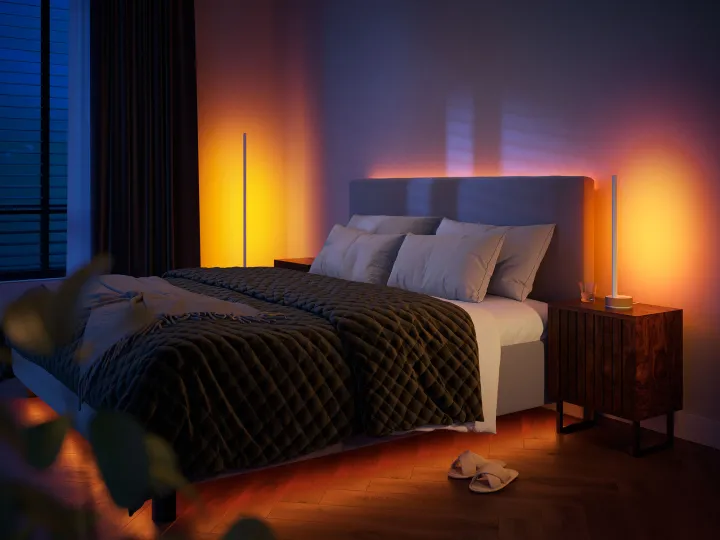Philips Hue took the wraps off several new smart lamps and upgrades, including a portable lamp, a new twist on its physical switch, new indoor downlights, and a smattering of other upgrades.

The new Philips Hue Go lamp offers a lot of the same features as the previous generation packed into a new form factor. A wireless charging base lets you grab it and go with minimal fuss. The stem has a grip to help you move it around while a single button cycles through different scenes. The standalone runtime on the lamp is 48 hours. Expect to see this one on store shelves by the end of the summer for $160.
The new Philips Hue Tap gives you quick access to four user-determined lighting scenes, and a dial surrounding those buttons gives full dimming control. Like the previous generation, it can be removed from its wall mount and used anywhere around the house. You can snag this one now in either black or white for $50.

A new version of the slim Signe lamp will be coming out in mid-July in a classy oak finish. If that’s not your jam, there are already versions with more muted black and white bases. The new one will cost you about $350. On the software side, Philips is introducing a new Sunrise routine, which promises to provide an even smoother wake-up experience. It’s optimized to work with gradient lighting, such as the Signe lamp.
Finally, Philips is releasing new generations of its recessed lights with enhanced brightness across the board. They’re available in 4-inch, or 5-/6-inch varieties, and in 4-packs if you need to kit out a whole room. Second-generation color downlights are $60 each or $220 for four. The third-generation white lights are $50, or $190 for the pack of four.
Europe has a few other products that will be coming soon, and hopefully reach North American shores shortly after. These include a new track lighting system called Perifo, a recessed spotlight for bathrooms dubbed Xamento, and a table version of the aforementioned oak Signe light.
Though the Hue brand is up against more competition than ever, it’s still bringing loads of different designs to its smart light family. Bulbs themselves are still a big part of the picture, but this string of announcements clearly puts the emphasis on fully-integrated hardware.



